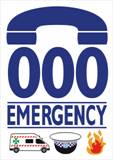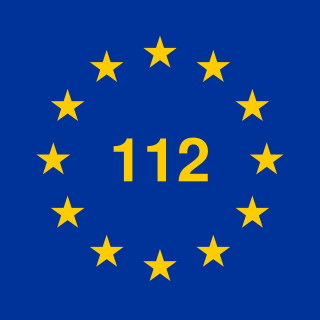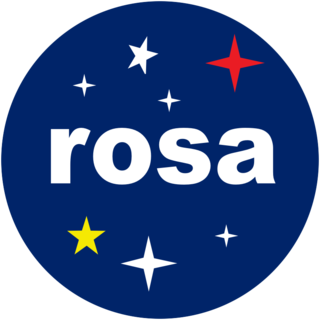The mass media in Romania refers to mass media outlets based in Romania. Television, magazines, and newspapers are all operated by both state-owned and for-profit corporations which depend on advertising, subscription, and other sales-related revenues. The Constitution of Romania guarantees freedom of speech. As a country in transition, the Romanian media system is under transformation.

Censorship and the issue of media freedom in Russia have been main themes since the era of the telegraph. Radio was a major new technology in the 1920s, when the Communists had recently come to power. Soviet authorities realized that the "ham" operator was highly individualistic and encouraged private initiative – too much so for the totalitarian regime. Criminal penalties were imposed but the working solution was to avoid broadcasting over the air. Instead radio programs were transmitted by copper wire, using a hub and spoke system, to loudspeakers in approved listening stations, such as the "Red" corner of a factory. Due to the enormous size of the country Russia today leads in the number of TV broadcast stations and repeaters. There were few channels in the Soviet time, but in the past two decades many new state-run and private-owned radio stations and TV channels appeared.
Voice over Internet Protocol (VoIP), also called IP telephony, is a method and group of technologies for the delivery of voice communications and multimedia sessions over Internet Protocol (IP) networks, such as the Internet. The terms Internet telephony, broadband telephony, and broadband phone service specifically refer to the provisioning of communications services over the Internet, rather than via the public switched telephone network (PSTN), also known as plain old telephone service (POTS).
Telephone tapping is the monitoring of telephone and Internet-based conversations by a third party, often by covert means. The wire tap received its name because, historically, the monitoring connection was an actual electrical tap on the telephone line. Legal wiretapping by a government agency is also called lawful interception. Passive wiretapping monitors or records the traffic, while active wiretapping alters or otherwise affects it.

Emergency services and rescue services are organizations which ensure public safety and health by addressing different emergencies. Some of these agencies exist solely for addressing certain types of emergencies whilst others deal with ad hoc emergencies as part of their normal responsibilities. Many of these agencies engage in community awareness and prevention programs to help the public avoid, detect, and report emergencies effectively.

Most public switched telephone networks have a single emergency telephone number that allows a caller to contact local emergency services for assistance. The emergency number differs from country to country; it is typically a three-digit number so that it can be easily remembered and dialed quickly. Some countries have a different emergency number for each of the different emergency services; these often differ only by the last digit.
The Defense Switched Network (DSN) is a primary information transfer network for the Defense Information Systems Network (DISN) of the United States Department of Defense. The DSN provides the worldwide non-secure voice, secure voice, data, facsimile, and video teleconferencing services for DOD Command and Control (C2) elements, their supporting activities engaged in logistics, personnel, engineering, and intelligence, as well as other Federal agencies.

A telecommunications relay service, also known as TRS, relay service, or IP-relay, or Web-based relay service, is an operator service that allows people who are deaf, hard of hearing, deafblind, or have a speech disorder to place calls to standard telephone users via a keyboard or assistive device. Originally, relay services were designed to be connected through a TDD, teletypewriter (TTY) or other assistive telephone device. Services gradually have expanded to include almost any real-time text capable technology such as a personal computer, laptop, mobile phone, PDA, and many other devices. The first TTY was invented by deaf scientist Robert Weitbrecht in 1964. The first relay service was established in 1974 by Converse Communications of Connecticut.

An N11 code is a three-digit telephone number used in abbreviated dialing in some telephone administrations of the North American Numbering Plan (NANP).

Telephone numbers in the Netherlands are administered by the Ministry of Economic Affairs, Agriculture and Innovation of the Netherlands and may be grouped into three general categories: geographical numbers, non-geographical numbers, and numbers for public services.
Project 25 is a suite of standards for interoperable digital two-way radio products. P25 was developed by public safety professionals in North America and has gained acceptance for public safety, security, public service, and commercial applications worldwide. P25 radios are a direct replacement for analog UHF radios, but add the ability to transfer data as well as voice, allowing for more natural implementations of encryption and text messaging. P25 radios are commonly implemented by dispatch organizations, such as police, fire, ambulance and emergency rescue service, using vehicle-mounted radios combined with handheld walkie-talkie use.
The Iowa Communications Network (ICN) is a state-administered fiber optics network designed to provide equal access to Iowans with modern telecommunication resources.

000 Emergency, also known as Triple Zero or Triple 0, and sometimes stylised Triple Zero (000), is the primary national emergency telephone number in Australia. The Emergency Call Service is operated by Telstra, and overseen by the Australian Communications and Media Authority (ACMA), and is intended only for use in life-threatening or time-critical emergencies.

112 is a common emergency telephone number that can be dialed free of charge from most mobile telephones, and in some countries, fixed telephones in order to reach emergency services.
119 (one-one-nine) is an emergency telephone number in parts of Asia and in Jamaica. From May 2020, 119 was introduced in the United Kingdom as the single non-emergency number for the COVID-19 testing helpline in England, Wales, and Northern Ireland. From January 2022, 119 was introduced in Romania as the single non-emergency number for reporting cases of abuse, neglect, exploitation and any other form of violence against the child.
Radio over Internet Protocol, or RoIP, is similar to Voice over IP (VoIP), but augments two-way radio communications rather than telephone calls. From the system point of view, it is essentially VoIP with PTT. To the user it can be implemented like any other radio network.

The dialling plan for mobile networks and new landline operators is closed; all subscriber numbers must be dialled in full. For landline numbers starting with 02, the dialling plan used to be open; the trunk digit and area code could be omitted if the caller was in the same area code as the callee. However, starting May 3, 2008, all landline numbers must be dialled in full.

In times of crisis and natural disasters, amateur radio is often used as a means of emergency communication when wireline, cell phones and other conventional means of communications fail.

The Romanian Space Agency is a public institution with extrabudgetary funding which coordinates the national space technology research programs and the space research related activities since 1991. ROSA is subordinated to the Ministry of Education.
British Rail Telecommunications was created in 1992 by British Rail (BR). It was the largest private telecoms network in Britain, consisting of 17,000 route kilometres of fibre optic and copper cable which connected every major city and town in the country and provided links to continental Europe through the Channel Tunnel.










